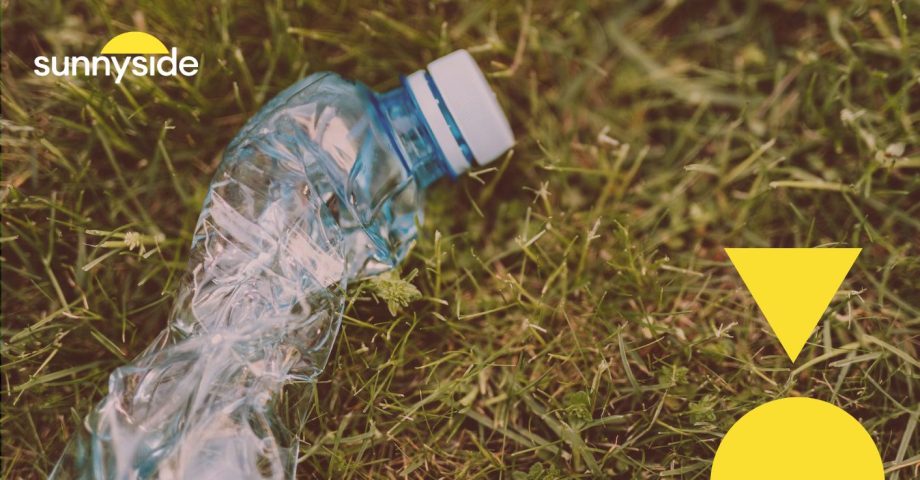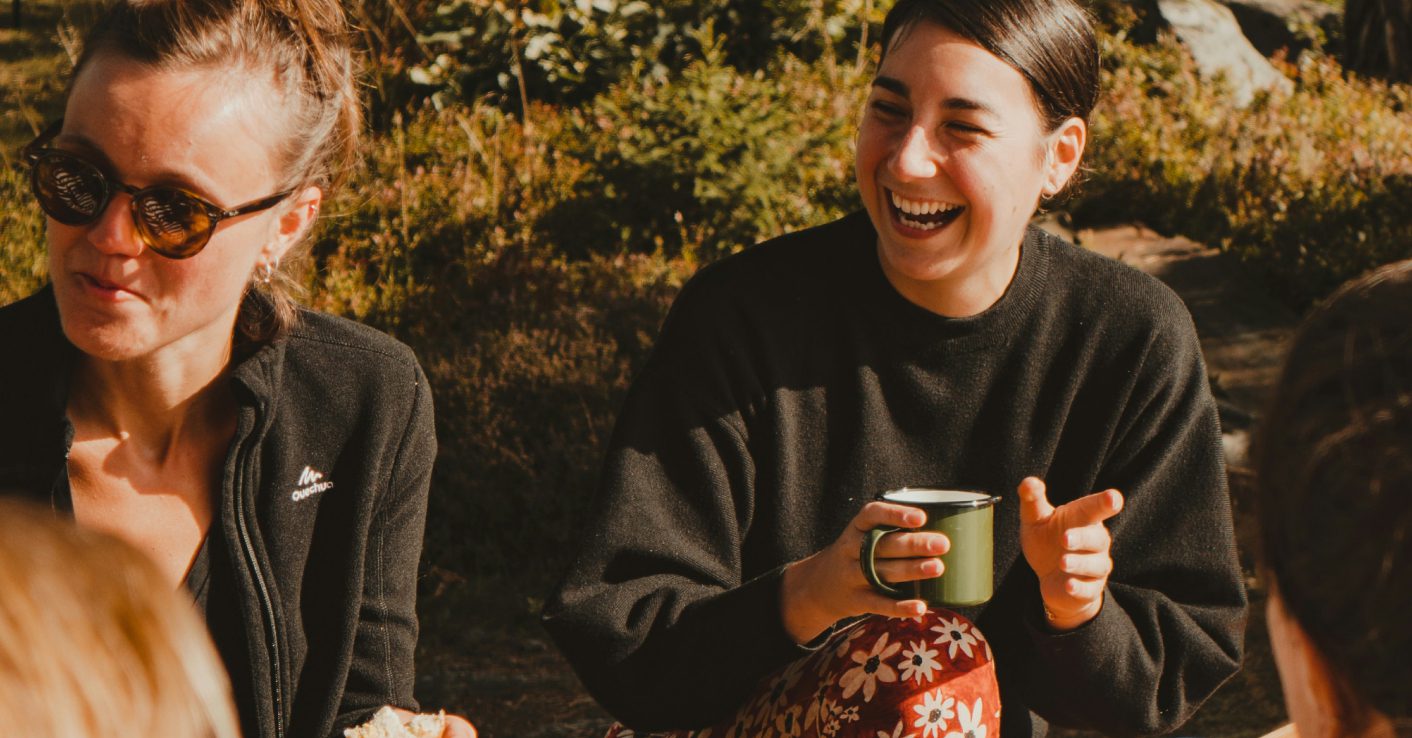Last Updated on October 3, 2023
You’ve had a hectic day at work. After dinner, you reach for a little wine to relax. But before you know it, you’ve downed the whole bottle. Sound familiar?
Many of us wish to cut back on the alcohol we consume. But it can be challenging to resist the temptation to drink, especially when we feel stressed or exhausted.
Our emotions and thoughts can influence our drinking patterns. In fact, some of the most common drinking triggers are directly linked to how we think and feel.
Studies have found that anxiety, stress, frustration, sadness, and irritability are highly associated with the urge to drink alcohol. Researchers also discovered that peer pressure was a strong trigger factor. Even alcohol-related sounds, sights, or smells may invoke cravings in some individuals [1].
While it’s close to impossible to eliminate all temptation to drink, there are some steps you can take to avoid and minimize your exposure to possible triggers. You can also implement strategies to help you suppress the urge to drink whenever it arises.
Let’s explore some of the best ways to overcome common drinking triggers!
Dealing with Internal Drinking Triggers
Internal triggers usually involve our thoughts and feelings. Both positive and negative emotions are linked to alcohol cravings. But stress, sadness, and anxiety are most notably linked to excessive drinking.
Here are strategies you can use to cope with internal triggers.
1. Go for a 10-minute walk.
Going for a quick stroll can help to distract your mind from alcohol cravings. If possible, you can perform a short bout of moderate-intensity exercise. Some research has found that short-circuit exercise can significantly lower alcohol cravings and even improve mood [2].
2. Throw back a glass of water.
Clinical findings suggest that drinking a high volume of water can help tackle the urge to drink [3]. This doesn’t necessarily have to be plain water. You may also opt for a cup of tea or fruit juice.
3. Pick up your favorite book.
Instead of giving in to your alcohol cravings immediately, try your best to stall as much as possible. Reading is one distraction that can help.
4. Call up a friend or family member.
This should preferably be someone who can encourage, support, and remind you of your goals whenever you’re resisting the urge to drink. But you can also converse about an unrelated topic as a form of distraction.
5. Take a relaxing shower.
This is another way to distract yourself from your alcohol cravings. You can couple up several activities, such as reading a book after you shower, to give yourself about 30-45 minutes to get over those cravings.
6. Meditate or practice yoga.
Not only are meditation and yoga research-backed methods of curbing stress, but they can also help distract you from your drinking urges [4].
7. Set limits.
Instead of a vague goal like, “Cut back on my alcohol intake,” try coming up with one that’s measurable and specific. Decide your daily drinking limit and how many days a week you’re allowed to drink. You can also plan a cut-off time for drinking each day so your sleep isn’t disrupted. Sunnyside can help you with this by helping you build a plan to moderate your drinking.
8. Track your alcohol consumption.
The best way to keep tabs on your progress is to track how much alcohol you consume, especially during parties and events. By noting how much alcohol you’ve had, you’ll know when you’re nearing the limit you’ve set. Take this 3-min quiz to make your own tracking plan.
9. Start journaling.
Track the days you’ve been successful in staying within your limits and how you feel about your progress and accomplishments. You can also write down and reflect on possible triggers or reasons that caused you to slip up.
10. Practice mindfulness.
Mindful drinking is a practice that encourages you to be conscious of how much you drink and why you drink. Research has shown that being vigilant and watchful of your patterns and behavior can help you control bad habits more effectively [5].
11. Keep alcohol out of sight.
The harder it is to reach for alcohol when the urge to drink strikes, the less likely you’ll give in to it. Consider keeping your alcohol in the basement or locked cabinet or giving away the alcohol in your house to friends and family.
12. Replace bad habits with healthier ones.
Researchers have discovered that swapping out a bad habit for a good one can be more effective than just trying to stop the bad habit on its own [6]. For example, you may swap out alcohol for a piece or two of chocolate after dinner.
13. Create a new wind-down routine.
Alcohol may help you to fall asleep faster. But it has an overall detrimental effect on sleep. A multitude of studies have shown that alcohol can reduce the quality and duration of sleep [7]. Instead of having a glass of wine, incorporate other relaxation techniques into your wind-down routine, such as reading a book or listening to soothing music.
14. Have a stress management routine.
Stress is one of the most common triggers, so think about strategies you can proactively implement to reduce stress. For example, building a self-care routine and enjoying the company of people you love are some practical ways to bust stress.
15. Remind yourself why you wish to cut back.
When you’re facing the temptation to drink, don’t respond to that urge immediately. Take time to think about whether you really need the drink, and weigh the outcomes of your drinking versus not drinking in your mind.
16. Use social media wisely.
Unfollow pages and profiles that celebrate or promote excessive drinking. Even pages advertising your favorite wine and beer brands may be an overlooked trigger source. You can instead connect with pages and communities that share similar values and goals.
Ready to cutback on drinking?Handling Environmental Drinking Triggers
The places you visit and events you attend may also impact how likely you are to over-indulge. Let’s explore some strategies you can use to counter environment-related drinking triggers.
17. Avoid places that encourage you to drink.
Figure out where you tend to drink the most, and plan alternative hangout spots for these places.
18. Change up your commute route.
If you’re always passing by your favorite bar or restaurant on the way home from work, consider switching up your commute route, so you’re less likely to be tempted.
19. Suggest meeting elsewhere.
You may suggest places that don’t serve alcohol as a spot to hang out with friends. Alternatively, you can recommend activities that don’t involve drinking, like hiking, playing board games, or watching a movie.
19. Plan to leave early.
You may set a time or drinking limit at an event you know involves a lot of drinking. Once that limit is up, make it a point to leave earlier and have an excuse prepared in advance if need be.
20. Have an escape route ready.
If you intend to leave earlier, plan how to get home, especially if your friends choose to stay back. If you’ve been drinking, calling a cab home or having a family member pick you up is best.
21. Make a swap.
Swap out alcohol for lower-ABV beverages and mocktails during events and parties.
22. Organize alcohol-free parties and events.
There are many creative ways to take alcohol out of the picture. Some examples are having a mocktail bar or stocking the fridge with non-alcoholic brands before a party.
23. Focus on the present moment.
Enjoy the music, company, and food. Actively try to get to know new people and strike up meaningful conversations with friends.
Learn strategies to drink less?Managing Social Drinking Triggers
Research has demonstrated that peer pressure can be a drinking trigger for both heavy and light drinkers. Some studies have also found that people drink more when accompanied than when alone [1].
Here are some ways to manage social triggers.
24. Let your friends know about your limits.
If you’re always hanging out with the same group of friends, it could be a good idea to let them know your drinking limits. That way, they may be less likely to offer you more alcohol than you’d like to have.
25. Hang out with friends who respect your boundaries.
It’s always best to spend time with people who respect your no’s and don’t push you to do things you don’t wish to. Of course, you’d have to be firm when communicating these boundaries to them.
26. Get an excuse ready.
If need be, have a reason prepared. Maybe you have to wake up early to run some errands, or you have a morning meeting the next day.
27. Change the topic.
Another way to refuse a drink is to change the topic of the conversation. This is also a great way to dodge questions you are uncomfortable answering about your drinking limits or habits.
28. Go to events with a buddy who doesn’t drink.
Having a non-drinker accompany you may help reduce the pressure to drink when surrounded by friends who do.
29. Find friends with similar goals.
When you have a community with similar mindsets and values, it becomes easier to stay true to the goals you’ve set for yourself. Not only will this community be a great place to seek advice from people who have walked in your shoes, but it is also a source of support and motivation when you face disappointment and setbacks in your journey.
30. Get an accountability partner.
An accountability partner can help you stay committed to your goals by providing meaningful support. They’ll celebrate your wins with you and help you reflect on your mistakes.
Let Sunnyside be your accountability partnerSunnyside’s Solution to Tackling Drinking Triggers
Sunnyside is a mindful drinking app that can help you tackle your drinking triggers. Through the app, you’ll determine and set your drinking limits, track your daily drinking, and receive personalized action plans to help you reduce your alcohol consumption and progress toward your goals.
You’ll also have access to daily tips, accountability messages, and reminders to track your drinking. Sunnyside’s real-life coaches are accessible through the app to provide personalized advice. The Sunnyside community of mindful drinkers is also a great place to seek advice, support, and encouragement.
To sum it up, the Sunnyside app and community offer a multi-pronged approach to help you combat your drinking urges and build a healthier relationship with alcohol.
Get started on Sunnyside’s free trial today!
References
[1] Ghiţă, A., Teixidor, L., Monras, M., Ortega, L., Mondon, S., Gual, A., Paredes, S. M., Villares Urgell, L., Porras-García, B., Ferrer-García, M., & Gutiérrez-Maldonado, J. (2019). Identifying Triggers of Alcohol Craving to Develop Effective Virtual Environments for Cue Exposure Therapy. Frontiers in psychology, 10, 74. https://doi.org/10.3389/fpsyg.2019.00074
[2] Ghiţă, A., Teixidor, L., Monras, M., Ortega, L., Mondon, S., Gual, A., Paredes, S. M., Villares Urgell, L., Porras-García, B., Ferrer-García, M., & Gutiérrez-Maldonado, J. (2019). Identifying Triggers of Alcohol Craving to Develop Effective Virtual Environments for Cue Exposure Therapy. Frontiers in psychology, 10, 74. https://doi.org/10.3389/fpsyg.2019.00074
[3] Koopmann, A., Lippmann, K., Schuster, R., Reinhard, I., Bach, P., Weil, G., Rietschel, M., Witt, S. H., Wiedemann, K., & Kiefer, F. (2017). Drinking water to reduce alcohol craving? A randomized controlled study on the impact of ghrelin in mediating the effects of forced water intake in alcohol addiction. Psychoneuroendocrinology, 85, 56–62. https://doi.org/10.1016/j.psyneuen.2017.08.005
[4] Woodyard C. (2011). Exploring the therapeutic effects of yoga and its ability to increase quality of life. International journal of yoga, 4(2), 49–54. https://doi.org/10.4103/0973-6131.85485
[5] Quinn, J. M., Pascoe, A., Wood, W., & Neal, D. T. (2010). Can’t Control Yourself? Monitor Those Bad Habits. Personality and Social Psychology Bulletin, 36(4), 499–511. https://doi.org/10.1177/0146167209360665
[6] Adriaanse, M. A., Gollwitzer, P. M., De Ridder, D. T. D., de Wit, J. B. F., & Kroese, F. M. (2011). Breaking Habits With Implementation Intentions: A Test of Underlying Processes. Personality and Social Psychology Bulletin, 37(4), 502–513. https://doi.org/10.1177/0146167211399102
[7] Park, S. Y., Oh, M. K., Lee, B. S., Kim, H. G., Lee, W. J., Lee, J. H., Lim, J. T., & Kim, J. Y. (2015). The Effects of Alcohol on Quality of Sleep. Korean journal of family medicine, 36(6), 294–299. https://doi.org/10.4082/kjfm.2015.36.6.294



